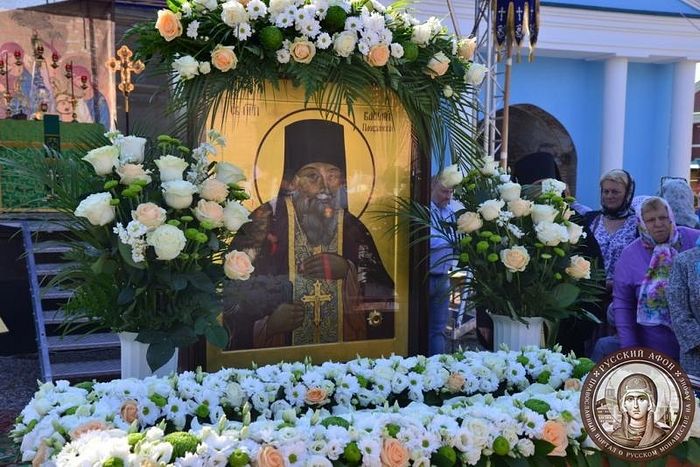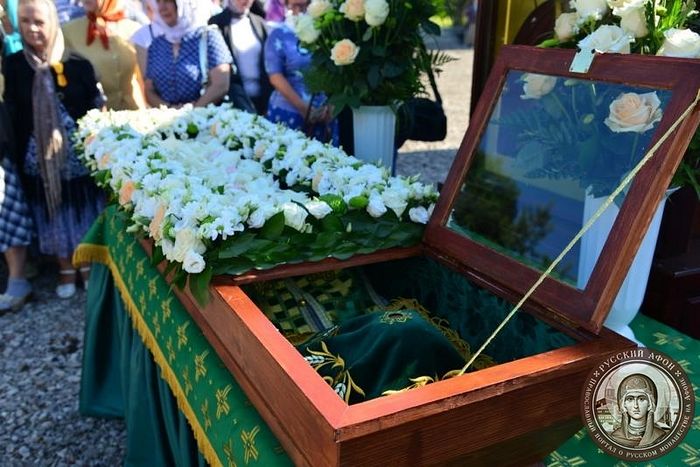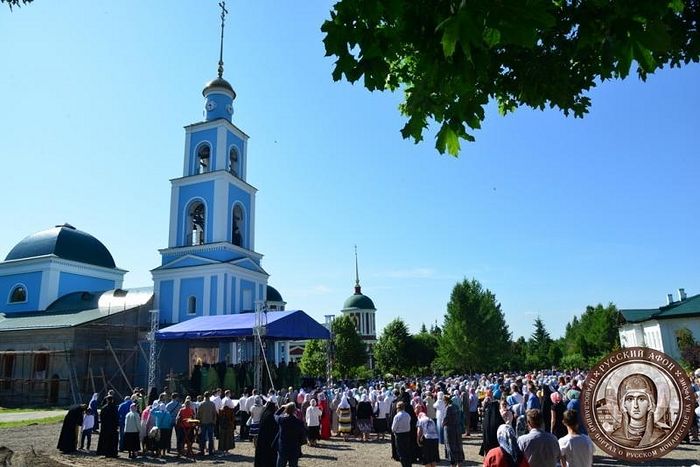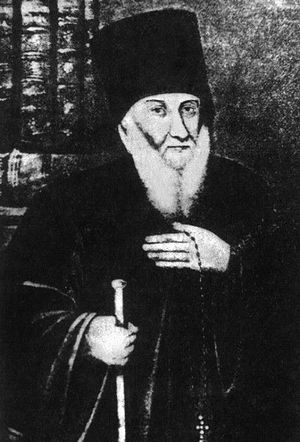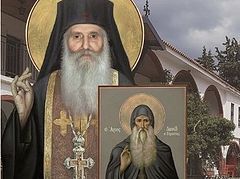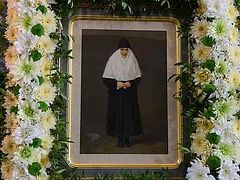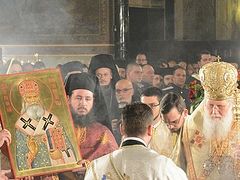Bryansk, Russia, June 19, 2018
The celebration of the glorification among the saints of the Athonite and Glinsk elder Vasily (Kishkin) was celebrated on Sunday at the Theotokos-Ploschansky Hermitage in Bryansk, Russia, reports Russian Athos.
St. Vasily was officially canonized for Church-wide veneration by the November-December session of the Council of Bishops of the Russian Orthodox Church. He was previously glorified by the Ukrainian Orthodox Church in 2008 and locally venerated in Ukraine. He was canonized as part of the Synaxis of Glinsk Saints, celebrated on September 9/22.
On May 25 of this year, he was also included in the Synaxis of Bryansk Saints. His relics were found in the spring of 2002 near the altar of the then-destroyed Kazan Cathedral in the Ploschansky Hermitage, where they can still be found today, in the Holy Protection Church.
The Divine Liturgy was celebrated by Metropolitan Alexander of Bryansk and Sevsk, Bishop Sergei of Velikie Luki and Nevel, and Bishop Vladimir of Klintsovsky and Trubchevsk on the square of the restored Kazan Cathedral.
The act of canonization of St. Vasily (Kishkin) was read out during the Small Entrance in the Liturgy. Then Met. Alexander blessed the gathered congregation with an icon of the new saint while his troparion was sung. A moleben to the new saint was also celebrated following the Divine Liturgy.
***
The holy Athonite elder Vasily (Kishkin) was born in 1745 in the village of Arkhangelsk in the Kursk Province to an impoverished noble family. He loved the liturgical services from his youth. He became a novice at the age of 7, and four years later was released to go on pilgrimage to Kiev.
He stayed in various monasteries in Kiev and also often visited the Monastery of Zadonsk, where St. Tikhon of Zadonsk taught him the Jesus Prayer. He was secretly tonsured as a monk in the Miropolsky Monastery in 1760. He was later ordained as a hierodeacon and bore the obedience of sacristan until 1794.
However, seeing himself being revered, he decided to depart for Mt. Athos with two disciples. They were later forced by the Turks to flee to Moldova, where they joined the Neamț Monastery with disciples of St. Paisius Velichkovsky.
In 1798, he went to the Kursk Hermitage, where he was entrusted with the spiritual care of the brethren and introduced Athonite rules. He later moved to the Soforniev Hermitage, where several disciples of St. Paisus Velichkovsky were living.
In 1800 he began repopulating the Beloberezkshy Hermitage, where the future Optina elder Leonid once lived, and other monks who revived the prayer of the heart at Valaam and other monasteries. His disciples became the abbots of many monasteries.
He was unexpectedly ordained a hieromonk in 1800. He rarely served the Liturgy, considering himself unworthy.
In 1816, he moved to the Glinsk Hermitage, where he lived for ten years. He was met with resistance when he tried to strengthen the monastery’s spiritual life, and was exiled in 1827 to the Ploschansky Hermitage, where he was respected.
He predicted his death 18 months ahead of time and began to intensify his spiritual life. He began to pray ceaselessly and serve the daily services, except for the Liturgy. He reposed on April 27, 1831, at the age of 86 and was buried in the Ploschansky Hermitage in front of the altar in the Kazan Church.
Pilgrimages to his grave continued even after 1917. The ruling communists attempted to desecrate and destroy his grave, but were unsuccessful, and pilgrimages were resumed in the 1940s. His relics were uncovered in 2002.
Follow us on Facebook!

